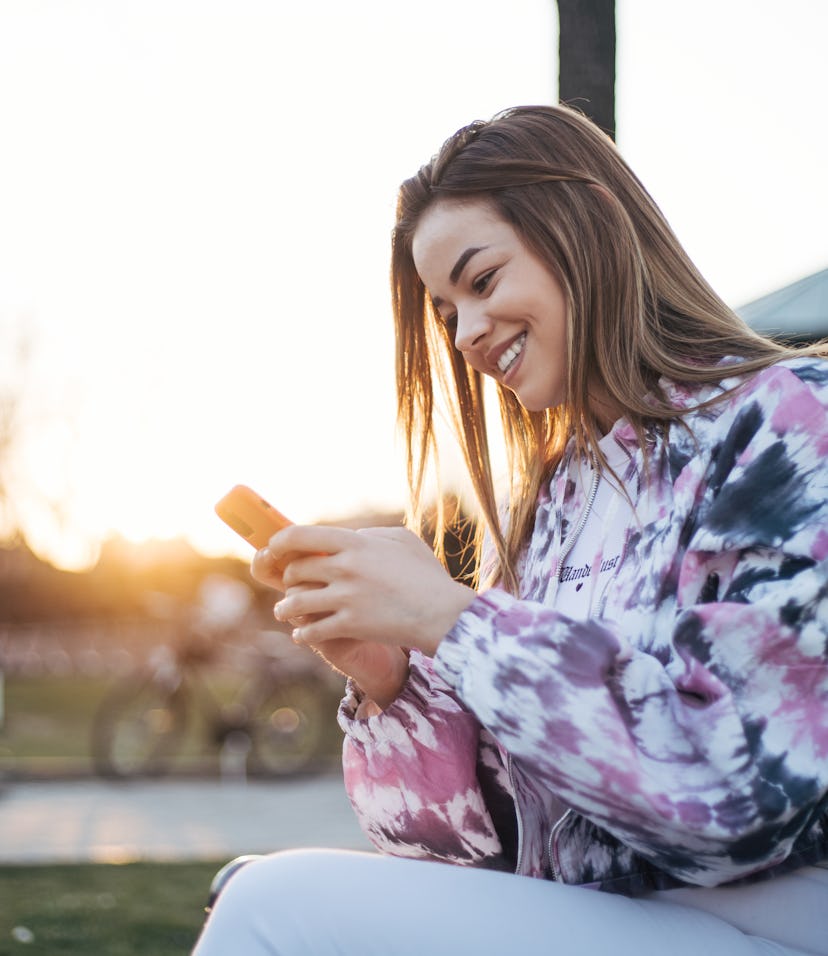
WhatsApp Finally Launched Emoji Reactions — Here's What They All Mean
So many feelings about this.
In a recent WhatsApp update, the messaging platform launched new emoji reactions allowing its users to react to messages with emojis like a thumbs up or a heart. Similar to Messenger’s and iMessage’s reaction features, you can long press on text bubbles to reveal WhatsApp’s six new emoji reactions. To express yourself in more ways and show support for messages in one simple tap, you can familiarize yourself WhatsApp’s new emoji reactions. So many feelings, but first, here’s what they all mean.
Meta CEO Mark Zuckerberg announced on Thursday, May 5 in a Facebook post that “Reactions on WhatsApp start rolling out today,” followed by the six emojis available for users to select in place of actual responses with words, because sometimes all you need is an emoji. Zuckerberg hinted at why they chose the select emojis in a comment on his announcement: “We're including 🙏 to help spread thanks and appreciation. More expressions coming soon.” Meta-owned WhatsApp was founded in 2009 and was acquired by Facebook in 2014, and the messaging app has over 2 billion monthly users — so that’s a lot of emoji reactions coming to your phone.
It’s taken a while for WhatsApp to follow in Facebook’s steps. After all, Messenger launched reactions more than five years ago on March 23, 2017, as a way of “quickly showing acknowledgement or expressing how you feel in a lightweight and fun way,” according to a 2017 announcement of the feature.
To use the new emoji reactions, you can long press on a message to bring up the emoji reactions, and WhatsApp will notify the sender of the original message when you react. In light of the new launch, WhatsApp partnered with emoji psychologist Lara Jones (yes, it’s a real thing) to look into the deeper meanings.
WhatsApp Emoji Reactions & What They Mean
👍 Thumbs up: The simplest form of reactions, the thumbs up indicates a “like” or to indicate approval. All around support.
❤️ Heart: Spread the love with the red heart emoji. Apparently, French speakers use the heart emoji four times more than the average user, according to an April 2015 study of emoji usage.
😂 Tears of joy: That feeling when something is so funny, you can’t contain your laughter and tears. It’s the most commonly used emoji across the world, according to an October 2019 article in Frontiers in Psychology shared by WhatsApp, and a good sign that everyone is feeling the joy.
😮 Surprised: Exactly what the expression implies, the surprised or shocked emoji is used to react to unexpected messages or an expression of amazement similar to saying “Wow!” or “That’s shocking!” Per Jones, Gen Z and millennial women use this emoji more frequently than men.
😢 Sad crying: The single tear streaming down the face emoji is symbolic of sadness or grief, usually a milder version of the closed eyes, tears streaming down your face emoji.
🙏 Folded hands: aka the prayer hands, it has a range of meanings across cultures, per Jones. It can be a way to show thanks, say please, or used to express prayers. According to Zuckerberg, they added it as a way to show “thanks and appreciation.”
While this new WhatsApp capability for emoji reactions is new, emojis are not — they’ve been around since 1999 when the quirky emoticons were created by Japanese artist Shigetaka Kurita, according to Wired. Back then, there were only 176 emojis. Fast forward to 2022, and there are now 3,633 emojis in the Unicode Standard, according to Emojipedia. Tech companies have been integrating the expressions for more than a decade. Apple added an emoji keyboard to iOS devices in 2011, and Android introduced it two years later. It’s an emoji world, and we’re just living in it.
Now that you can have even more fun with emojis on WhatsApp, you can get interactive and start reacting.